
Student Research and Innovation Projects
The Department of Physics, Faculty of Science, KMUTT, emphasizes hands-on research experience for undergraduate students, alongside the development of innovations that address current societal and industrial challenges. Student research spans a wide range of fields, including materials science, medical physics, energy, healthcare technology, theoretical physics, data analysis, and artificial intelligence applications. These works reflect the students’ potential to creatively integrate physics knowledge into real-world technological advancements.
Outstanding Research and Innovation of the Year 2024
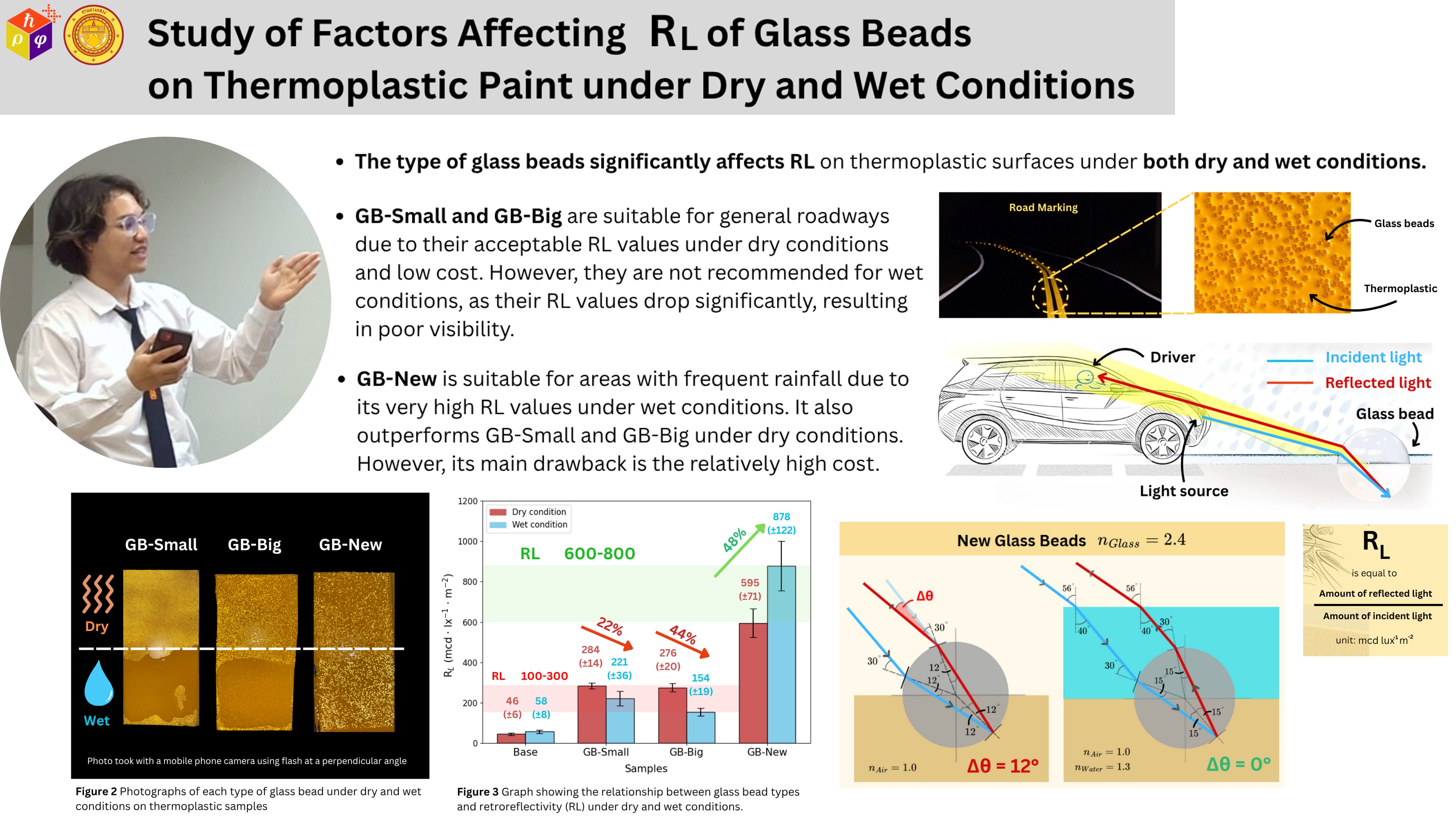
Student: Mr. Thanaworrapan Napitchsid — 4th‑year Physics student
Advisors: Asst. Prof. Dr. Chittra Kedkaew & Dr. Arpaporn Oros (Department of Highways, Thailand)
This project studied the factors that affect the coefficient of retroreflected luminance (RL) of glass beads applied to thermoplastic road markings in both dry and wet conditions. Glass beads can help drivers see road markings clearly at night by reflecting light back toward the driver. However, when the road is wet, these markings can be difficult to see. To better understand this problem, the study focused on the impact of different types of glass beads on RL, with the goal of finding the type that gives the best reflection in all conditions. This study provides useful information for choosing the right type of glass bead for actual road use based on environmental conditions. By balancing performance and cost, road visibility and nighttime driving safety can be improved in all weather conditions.
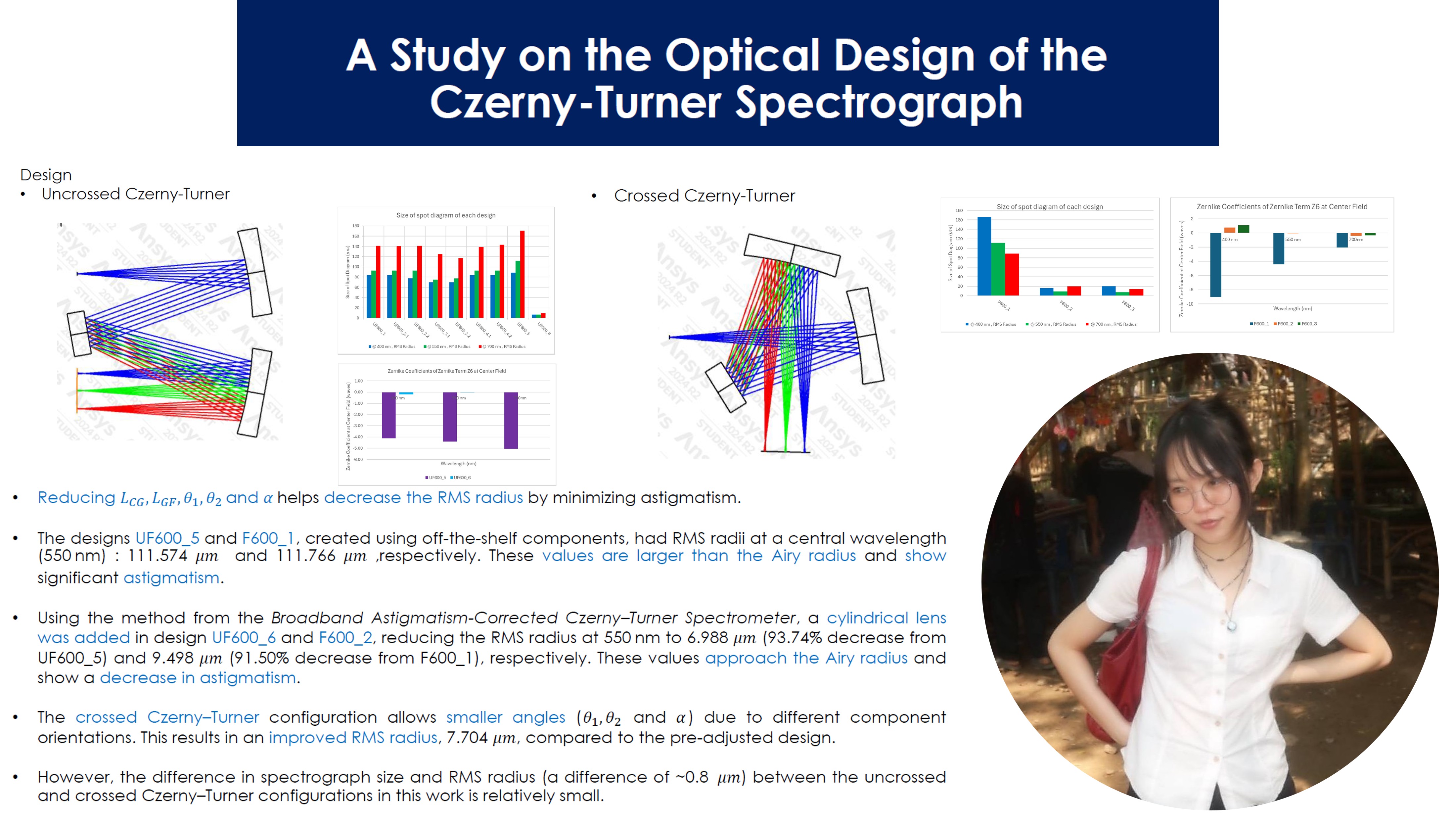
Student: Ms. Bangon Prasutham — 4th‑year Physics student
Advisors: Dr.Suwat Tangwancharoen, Dr. Chanisa Kanjanasakul (Center for Optics and Photonic, NARIT), Col. Dr. Nawapong Unsuree (Chulachomklao Royal Military Academy)
This project investigates the theoretical principles behind the operation and design of basic spectrographs, with a focus on the Czerny-Turner configuration, covering both Uncrossed and Crossed Czerny-Turner configurations. Optical system models were created using Ansys Zemax OpticStudio, with component dimensions based on commercially available devices, to evaluate the spectrograph’s performance. This evaluation was based on the Root Mean Square (RMS) Radius, which ideally should be small and approach the Airy Radius. From the design process, it was found that reducing the distance and angles of the mirrors and grating led to a lower RMS Radius. However, the result still did not approach the Airy Radius due to coma aberration. A cylindrical lens was introduced to correct this aberration, which successfully reduced the RMS Radius and brought it closer to the Airy Radius. Nevertheless, the final results showed that there was no significant difference in performance between the Uncrossed and Crossed Czerny-Turner configurations.
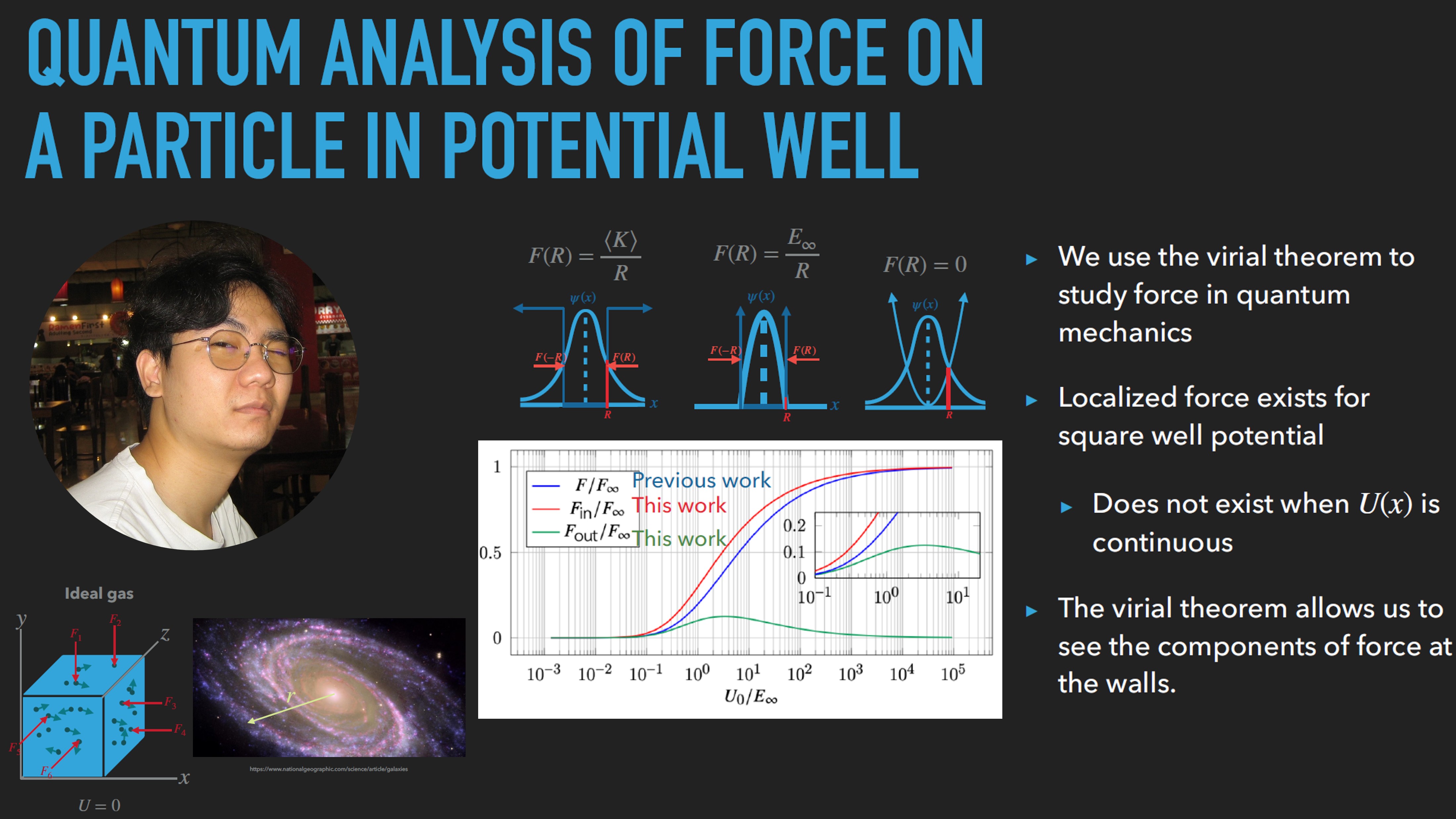
Student: Mr. Bodin Worrasookwanich — 4th‑year Physics student
Advisors: Dr. Wittaya Kanchanapusakit
This project explores the notion of a localized quantum mechanical force using the virial theorem. In classical mechanics, the force acting on a particle at a specific position governs its motion according to Newton's second law. However, in quantum bound states, the force is defined through the gradient of the potential energy, quantum-mechanically averaged over a range of positions, making the concept of force at a specific location less meaningful. To investigate this, we use a model of a particle in a finite square well and find that the force at the boundary can be decomposed into two components—a feature not addressed in earlier studies. These components depend on the height and width of the well, allowing us to analyze their effect on the net force. The study is further extended to include the infinite square well and the quantum harmonic oscillator.
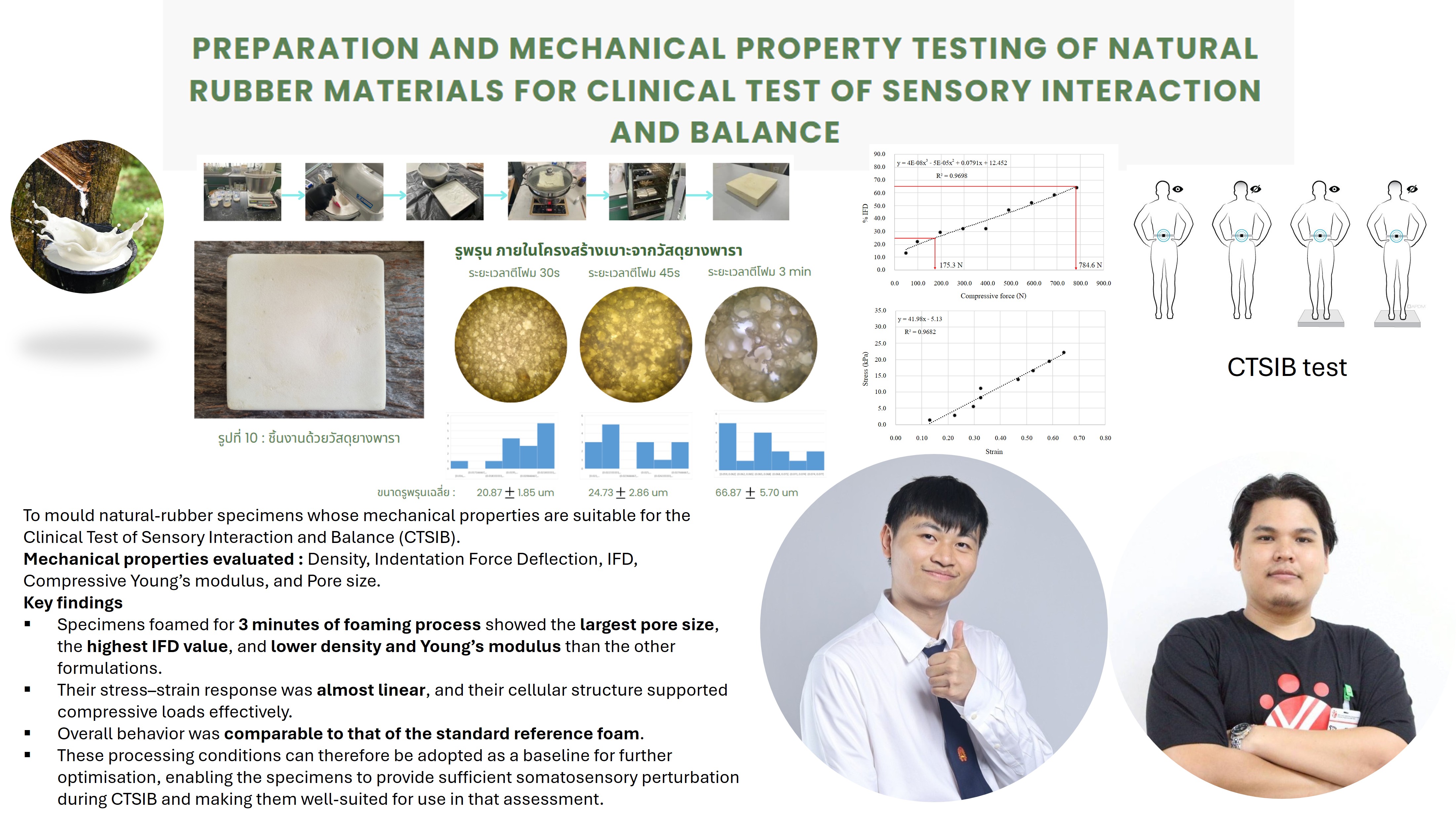
Student: Mr. Suwicha Lekjam and Mr. Athiwat Puengprasert — 4th‑year Physics students
Advisors: Dr. Phitsini Suvarnaphaet and Asst. Prof. Dr. Yeampon Nakaramontri (Department of Chemistry)
This project presents a method for preparing and testing the mechanical properties of natural rubber materials as an alternative material for clinical tests related to sensory perception and postural control (CTSIB). The natural rubber samples were prepared by varying the foaming time process to study their mechanical properties and deformation behavior, tailored to the desired internal structure. As a result, the prototypes exhibited softness and structural integrity capable of withstanding compression forces, allowing them to recover well after being compressed. This provides a foundation for developing suitable materials for clinical tests involving somatosensory system perturbations.
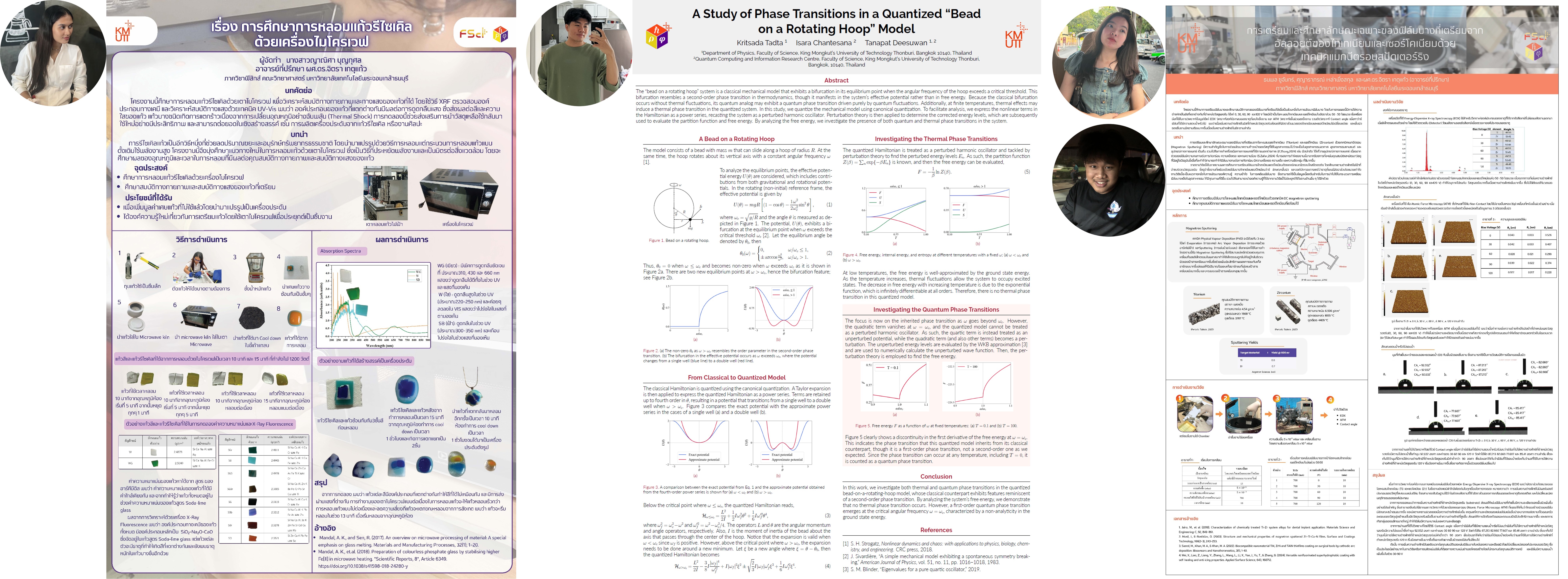
Poster Awards
-
Miss Yanisa Boonkusol
-
Mr. Kritsada Tadta
-
Mr. Thanapon Chuchan and Miss Suyaraporn Laophuengsakul


